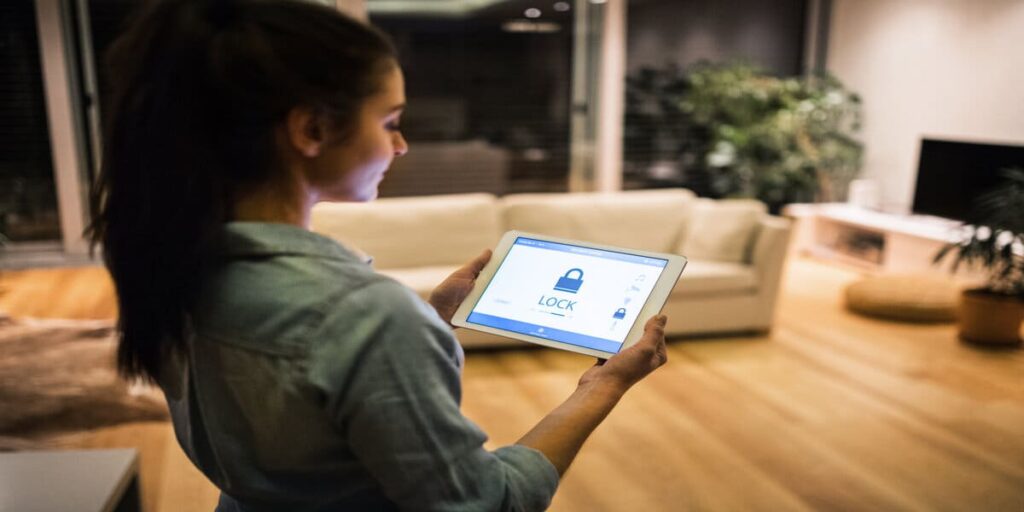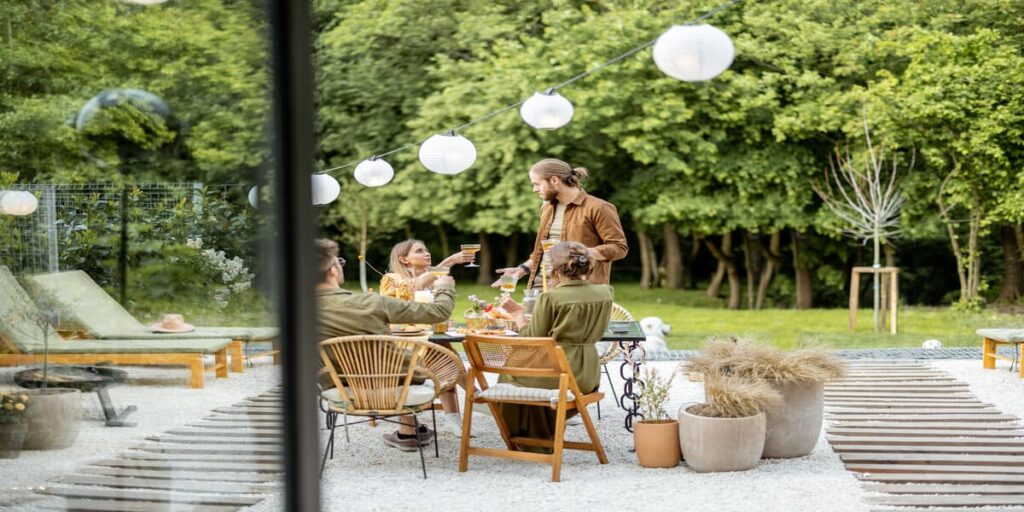Home design has evolved over the years, shifting from purely functional spaces to ones that reflect personal style and environmental consciousness. Today’s trends lean towards sustainable materials, energy efficiency, and versatile spaces that adapt to changing lifestyles and technologies.
Importance of Timeless Additions
Timeless additions in home design ensure that a space remains relevant and appealing for many years. They involve choosing styles and materials that won’t become outdated quickly, making the home a lasting investment. Such designs also offer flexibility, adapting to various trends and personal changes. This approach enhances the home’s aesthetic value and contributes to its long-term financial worth.
Use of Recycled and Renewable Resources
Using recycled and renewable resources in home additions is a growing trend that supports environmental sustainability. These materials, such as reclaimed wood or recycled glass, reduce waste and lower the environmental impact of construction. They also add unique character and history to a home, making each space distinct. Choosing these eco-friendly options contributes to a healthier planet and can often be cost-effective in the long run.
Benefits of Sustainable Building
Sustainable building practices offer significant environmental and economic benefits. By using energy-efficient materials and designs, homeowners can reduce utility costs and minimize their carbon footprint. Sustainable buildings often have better air quality and natural lighting, enhancing the living experience. Additionally, these practices can increase the property’s value due to their growing popularity and environmental benefits.

Latest in Home Automation
The latest trends in home automation focus on creating smarter, more connected homes. Technologies like voice-controlled assistants, automated lighting, and smart thermostats enhance convenience and energy efficiency. Smartphones can control These systems remotely, offering homeowners greater control and security. Integrating these technologies into home design is becoming increasingly popular for their ease of use and lifestyle enhancements.
Future-Proofing with Technology
Incorporating advanced technology in home design is key to future-proofing a property. This involves installing systems that can be easily updated as technology evolves, like smart home wiring and adaptable energy systems. Such forward-thinking designs ensure the home remains compatible with new devices and technologies, maintaining its modernity and functionality. This approach not only enhances the home’s current appeal but also safeguards its relevance and value in the future.
Designing for Versatility and Adaptability
Designing homes for versatility and adaptability allows spaces to serve multiple purposes over time. This approach includes features like movable walls or convertible furniture, enabling easy reconfiguration of living areas. Such flexible design accommodates changing family needs, work-from-home trends, and evolving personal preferences. Homeowners can ensure their space remains functional and relevant for years by focusing on adaptable design.
Examples of Convertible Spaces
Convertible spaces in homes are designed to serve various functions with minimal adjustments. For instance, a home office can easily transform into a guest room with a Murphy bed or a fold-down desk. A dining area might double as a craft or play space with modular furniture and storage solutions. These multi-use spaces maximize the utility and flexibility of a home, catering to diverse activities and needs.

Embracing Natural Light and Outdoor Access
Designs that embrace natural light and outdoor access are becoming increasingly popular in modern homes. Large windows, skylights, and glass doors bring in sunlight and connect seamlessly with the outdoors. These features enhance the aesthetic appeal of a home and improve mental well-being by connecting residents with nature. Additionally, maximizing natural light can reduce the need for artificial lighting, thereby saving energy.
Blurring the Lines Between Inside and Out
Modern home design is increasingly focused on blurring the lines between indoor and outdoor spaces. This is achieved through retractable glass walls, outdoor kitchens, and continuous flooring that extends from inside to outside. Such designs create a fluid transition, expanding living spaces and bringing the natural environment closer. This integration enhances the home’s aesthetic and encourages outdoor living and entertainment.
Incorporating Natural Elements
Incorporating natural elements into home design has gained popularity for its aesthetic and health benefits. Materials like wood, stone, and plants are commonly used to bring a touch of nature indoors. These elements create a calming and refreshing atmosphere, creating a more tranquil living environment. Natural materials can also improve air quality and connect residents with the outdoors.
Designing for Mental and Physical Well-being
Designing homes focusing on mental and physical well-being is a key trend in modern architecture. This includes creating spaces with ample natural light, ventilation, and areas for relaxation and exercise. Incorporating elements like indoor gardens or meditation rooms can enhance mental health, while dedicated spaces for physical activity contribute to overall fitness. These design choices create a more healthful and harmonious living environment.

Elements That Transcend Trends
Certain design elements can transcend passing trends and remain timeless in home decor. Classic choices like neutral color palettes, natural wood finishes, and simple, clean lines always stay in style. These elements provide a foundation that can be easily updated with accessories or minor changes, allowing the home to evolve without needing major renovations. Focusing on these enduring elements ensures a home remains modern and classic for years.
Balancing Modern and Traditional Looks
Combining modern and traditional looks in home design creates a timeless and appealing aesthetic. This can be done by blending contemporary elements, like minimalist furniture, with classic features, such as ornate moldings or vintage accents. Mixing these styles in a cohesive, not cluttered way is key. This approach allows homeowners to enjoy the best of both worlds, combining the comfort of traditional design with the sleekness of modern trends.
Innovations in Insulation and Energy Use
Recent innovations in insulation and energy use are transforming home efficiency. Advanced materials like aerogel insulation and smart windows significantly reduce heat loss, leading to lower energy bills and a smaller carbon footprint. Smart home systems can optimize energy use, automatically adjusting heating and cooling based on occupancy and weather. These technological advancements save money and contribute to a more sustainable living environment.
Long-Term Cost Benefits
Investing in sustainable and efficient home designs offers significant long-term cost benefits. Energy-efficient appliances, solar panels, and improved insulation reduce monthly utility bills and maintenance costs. Eco-friendly materials, though sometimes more expensive upfront, often have greater durability, leading to fewer replacements and repairs. Over time, these investments save money and increase the home’s overall value and marketability.
Reflecting Local Styles and Materials
Incorporating local styles and materials in home design adds a unique, region-specific charm. Using locally sourced materials like stone, wood, or traditional textiles supports the local economy and reduces transportation emissions. Designs that reflect the local architecture and cultural heritage create a sense of belonging and connect the home to its surrounding community. This approach not only enhances the aesthetic appeal but also promotes environmental sustainability.
Incorporating Heritage into Modern Designs
Blending heritage elements into modern home designs creates a rich, layered aesthetic. This can involve integrating traditional architectural features or antique furnishings in contemporary spaces. Such combinations preserve historical character while providing modern comfort and functionality. This approach honors the past and adds a timeless quality to the home’s design.

Emerging Materials and Techniques
The field of home construction is continually evolving with new materials and techniques. Innovations like self-healing concrete, transparent aluminum, and 3D-printed building components are making waves. These materials offer enhanced durability, efficiency, and design possibilities. Adopting these cutting-edge techniques allows for more creative, sustainable, and resilient home construction.
Predicting the Next Big Things in Home Additions
Predicting future trends in home additions involves looking at evolving technologies and changing lifestyles. Smart homes with AI-driven systems are expected to become more prevalent, offering unprecedented convenience and efficiency. Eco-friendly and modular construction methods are also rising, catering to a growing demand for sustainability and flexibility. Additionally, spaces dedicated to health and well-being, like home gyms and meditation rooms, will likely become standard features in modern homes.
Reflection on Home Addition Trends
In-home additions, the emphasis on sustainability, technological advancement, and versatility stands paramount. The growing inclination towards eco-friendly materials and smart home integrations reflects a collective move towards more responsible and efficient living. Additionally, creating adaptable and multi-functional spaces caters to the dynamic nature of modern lifestyles, ensuring that homes remain relevant and useful over time. These trends, together, paint a future where home design is not just about aesthetic appeal but also about longevity, sustainability, and adaptability, thereby securing a more environmentally conscious and technologically advanced living environment for future generations.

Frequently Asked Questions
What are the most popular materials for sustainable home additions?
Popular sustainable materials include reclaimed wood, recycled glass, and bamboo. These materials are environmentally friendly and add unique character to your home.
How can I incorporate smart technology into my home?
You can install smart thermostats, automated lighting systems, and voice-controlled assistants. These technologies offer convenience and can be easily controlled via smartphones.
How do indoor-outdoor living spaces benefit homeowners?
These spaces enhance the overall living experience by increasing natural light, improving air quality, and providing a seamless transition to outdoor living, which is great for entertaining and relaxation.
What are some ways to balance modern and traditional looks in home design?
You can achieve this balance by mixing modern elements like clean lines and minimalist furniture with traditional accents like vintage décor or classic architectural details.
How can design elements transcend home design trends?
Timeless design elements such as neutral color schemes, natural materials, and simple, clean lines can easily adapt to changing trends and personal preferences.
How can I reflect local styles and materials in my home design?
Use locally sourced materials like native stone or wood and incorporate design elements of your region’s architectural heritage.
.



























